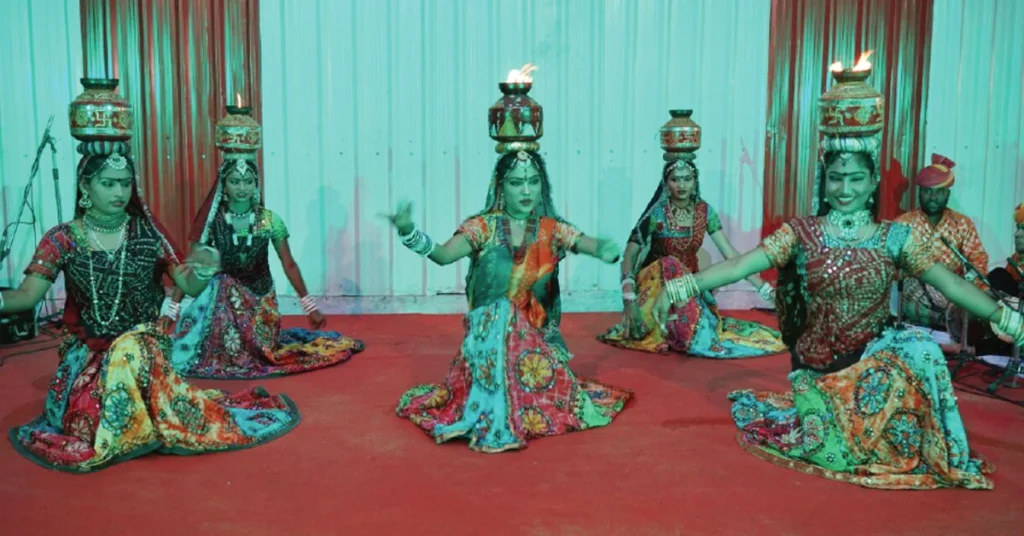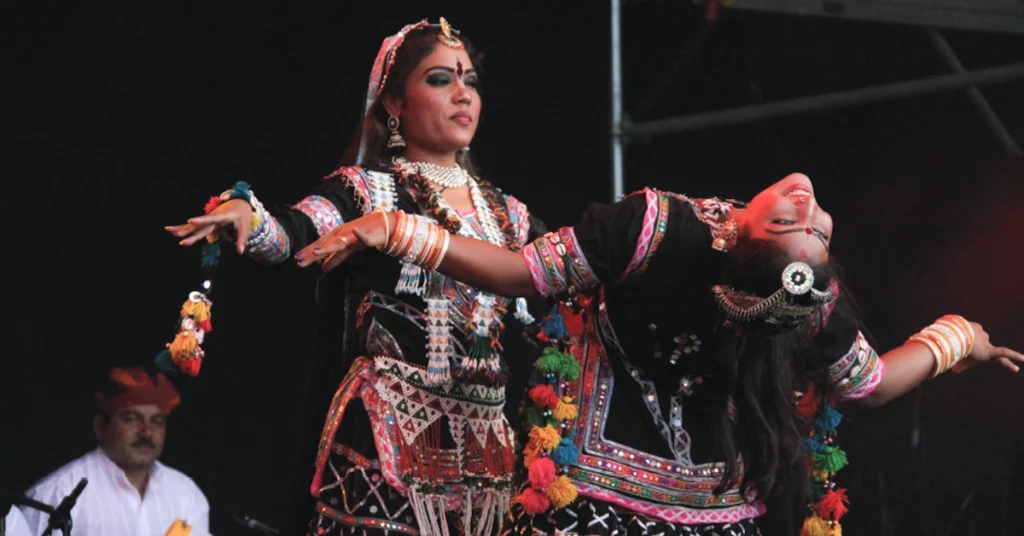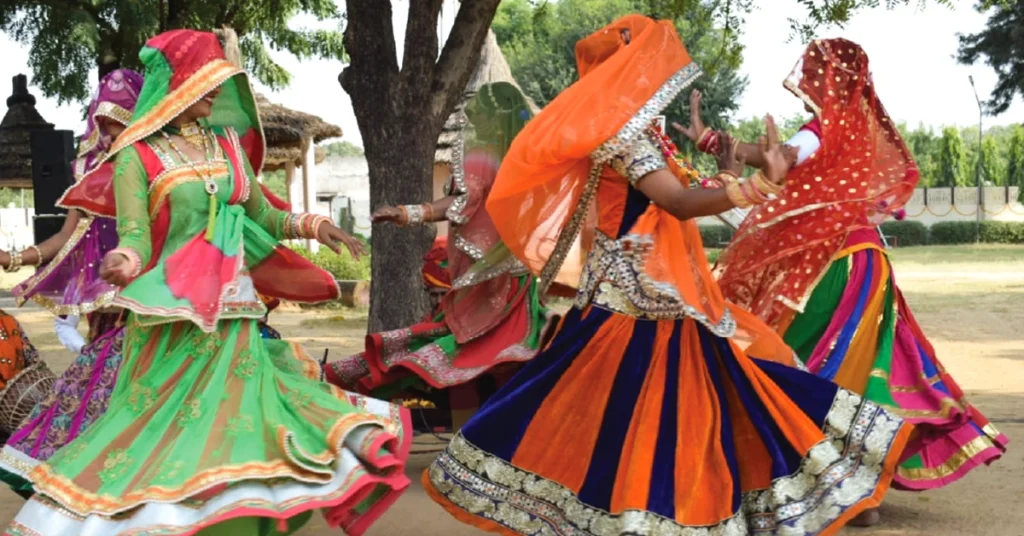Chari Dance is a folk dance in the Indian state of Rajasthan. Chari dance is a female group dance. It is related to Ajmer and Kishangarh. Chari dance is prominent in Gujjar and Saini community of Kishangarh and Ajmer and known all over Rajasthan. The Chari dance is performed at marriage celebrations, on the birth of a male child and at celebrations and festivals of goodness.
During the Chari dance, colorfully dressed, bejeweled women hold earthenware or brass Chari pots on their heads. Often, the Chari are set on lit Diya (oil lamp) or fire with cotton seeds immersed in oil. Dancers carry a flaming pot on their head without touching it, while performing graceful movements of limbs and deep swirls of knees. To make the dance look more attractive lines of lighted patterns are created as the dancers move quietly around the floor.
Chari dance is played with Nagada, Dholak, Dhol Harmonium, Thali(an autophonic instrument) and Bankia. Bankia is the most common. It produces a powerful, eerie sound in dexterous hands. Dancers wear Rajasthani golden ornaments named Hansli, Timniya, Mogri, Punchi, Bangdi, Gajra, Armlets, Karli, Kanka and Navr.
These lit pots display beautiful effect in the dark night. While performing the Chari dance woman dance with balancing brass pots (Chari) on their heads and move together and dance on a same sequence. This dance does not have any particular movements except balancing the pots on their heads. This dance is also known as a welcome dance and is a significance of goodness. It can also be considered as the traditional fire dance of Rajasthan.



